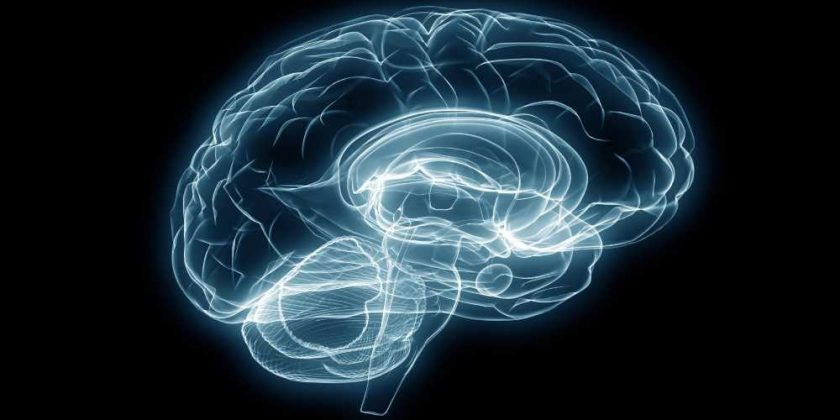During pregnancy, women undergo various changes in their bodies and behavior. A recent Nature Communications study evaluated pre-pregnancy and post-pregnancy brain scans to understand better the changes in grey matter architecture, neural metabolite concentration diffusion metrics, and the temporal coherence of neural networks. Additionally, the biological factors associated with these changes were assessed in this study.

Background
Genetics & Genomics eBook

Pregnant women undergo a monumental transition related to a cascade of endocrine and various adaptational changes in the body. Almost all bodily systems change during pregnancy, and some physiological changes remain consistent for decades after giving birth. Limited evidence has been documented on the changes in the human brain during pregnancy and beyond.
Several non-human animal models have indicated a correlation between reproduction and brain plasticity. These studies have indicated prominent changes in the mammalian brain and behavior.
According to a recent study, pregnant women change the grey matter structure of the human brain. The present study went a step further to analyze the changes in pregnant women’s neural metabolite concentrations, neural network organization, and white matter microstructure using a comprehensive prospective study cohort.
About the study
In this study, four longitudinal experimental sessions were included, and the participants were followed from pre-conception to the late postpartum period. Analytical tools, such as diffusion-weighted imaging, anatomical magnetic resonance imaging (MRI), resting-state functional MRI acquisitions, and 1H-nuclear magnetic resonance spectroscopy, were used to investigate the effect of pregnancy on human brains.
Changes in hormonal profiles were assessed to analyze the mechanism behind pregnancy-related neuroplasticity. The levels of maternal hormones were determined using biological samples collected every four weeks of pregnancy. The sleeping pattern and stress levels of the participants were also recorded.
The changes in the brain scans during the study period were recorded in a chart. A specific structural and functional brain plasticity was observed that might contribute to maternal adaptivity during pregnancy.
Findings
Compared to non-pregnant women, a distinct grey matter architecture was found in pregnant women. A reduction in grey matter volume was observed in pregnant women, affecting the anterior and posterior cortical midline and specific parts of the bilateral lateral prefrontal and temporal cortex.
Magnetic resonance spectroscopy, diffusion-weighted imaging, and resting-state functional MRI data revealed no significant difference in the white matter diffusion metrics or volume between the pregnant and nulliparous women groups (control). This finding indicates that a woman’s white matter anatomy remains stable throughout pregnancy.
The fluctuations in sex steroid hormones were selectively strong for certain brain components, i.e., the steroidal hormones affect the brain’s grey matter significantly more than the white matter structure. Magnetic resonance spectroscopy data revealed no change in neural metabolite concentrations across pregnancy.
The Default Mode Network (DMN) corresponds to a group of highly coherently activated brains that remains highly active even without a specific task. Hence, DMN reflects an individual brain’s baseline activity. It is also strongly engaged with higher-order social processes, such as social evaluation, social cognition, and empathy.
MRI data on women’s resting state deciphered the neural network organization of pregnant women. This analysis revealed a selective increase in the DMN in pregnant women who were between sessions, compared to the control group. Although structural brain changes were more prominent in the DMN, the fronto-parietal brain regions associated with higher-order cognitive tasks (e.g., cognitive functions) were also affected.
It is important for new mothers to focus on their infant's needs and feelings, and understand their emotions. Accordingly, several studies have indicated a functional change in the DMN. Additionally, resting-state functional connectivity in mothers was linked with maternal behavior.
The current study speculated that structural and functional pregnancy-associated modifications in the DMN change the neuronal structure of an individual, which prepares women for motherhood. Interestingly, it was observed that the neural changes in the DMN were related to the degree of mother-infant bonding.
Some of the factors that drive pregnancy-related brain plasticity are pregnancy hormones. For instance, estradiol levels, particularly in the third trimester, were associated with changes in brain structure. Sleep, osmotic effects, breastfeeding, stress, or the type of delivery were not linked with any structural or functional changes in the brain during pregnancy. The unparalleled estrogen exposure during the last stage of pregnancy was found to affect pregnancy-related structural neuroplasticity.
Conclusions
Analytical data on pregnant women indicated structural and functional plasticity within the DMN, suggesting that mothers experience changes in the baseline state of the brain. Functional changes in the DMN were associated with the infant-directed processes, while structural brain changes are related to simulations of preparatory behavior. In the future, a wider range of potential regulatory factors (e.g., nutrition, genetic markers, environmental changes, and exercise) must be evaluated to understand better their role in influencing the brain’s processes during pregnancy.
- Hoekzema, E., et al. (2022) Mapping the effects of pregnancy on resting state brain activity, white matter microstructure, neural metabolite concentrations and grey matter architecture. Nature Communications. doi: https://doi.org/10.1038/s41467-022-33884-8 https://www.nature.com/articles/s41467-022-33884-8
Posted in: Medical Science News | Medical Research News | Disease/Infection News
Tags: Anatomy, Brain, Breastfeeding, Conception, Cortex, Endocrine, Estradiol, Estrogen, Exercise, Functional MRI, Genetic, Grey Matter, Imaging, Magnetic Resonance Imaging, Metabolite, Nutrition, Pregnancy, Reproduction, Sleep, Spectroscopy, Steroid, Stress

Written by
Dr. Priyom Bose
Priyom holds a Ph.D. in Plant Biology and Biotechnology from the University of Madras, India. She is an active researcher and an experienced science writer. Priyom has also co-authored several original research articles that have been published in reputed peer-reviewed journals. She is also an avid reader and an amateur photographer.
Source: Read Full Article
